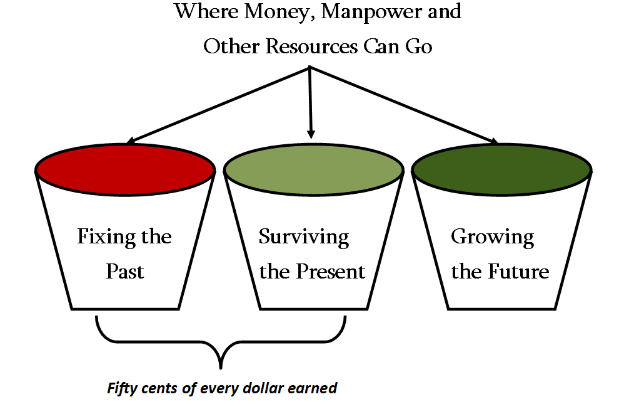Managing to the “1”
The 1-10-100 Rule is a quality management concept developed by G. Loabovitz and Y. Chang that is used to quantify the hidden costs of poor quality. Every $1 a business spends to get something right the first time or “hold the line” becomes a $10 investment when the same risk has to be resolved with a mid-course correction and $100 or more once it becomes an error that has to be fixed after the fact. It is a significant rule for leaders in a technologically-advancing and safety-critical industry like the one that health care has become because of how the cost of managing to the “100” can end up being some factor of ten being applied to that one-hundred dollar bill depending on how negative the outcome is and big the fix or restitution needs to be. The difference is what it costs when a nurse or doctor prevents an infection with the simple and inexpensive act of handwashing versus the cost of treating an infection caused by a multi-resistant organism requiring isolation type precautions and a very expensive antibiotic while also causing a much longer hospitalization just because someone did not wash his or her hands. The difference is in what it cost to take a few extra minutes to verify that a surgical team is operating on the right body part and paying the financial, operational and reputational price that comes with absorbing all the costs that come with a second surgery to make a patient’s care right and a medical malpractice claim?
For health care, the question about how often one of its providers ends up having to manage its risks to some factor of “100” is becoming one of survival as the industry’s earnable revenues shrink at the same time the funding that once paid a provider to get it right the second time and treat complications associated with risks that cross the line dries up. It is an environment where survival is less and less about how much new revenue a leader can chase down and much more about how many wasteful costs that individual can be in control of – how many times he or she can make sure that something is managed to the “1” so there is no need to worry about what it could cost if it has to be paid for to the “100”.
Why this is so important and why SQSS is built to promote managing quality to the “1” lives in the fact that those providers most likely to survive through the 2020s will be those who can get control of how much money and manpower they can keep in their buckets for funding future growth because of how well they do in controlling how much they spend to the “100” in their buckets for surviving the present and fixing the past. As the average provider today now spends as much as fifty cents of every dollar it earns in these buckets with more than half of that figure being recoverable by managing quality to the “1” in more business smart ways, one of the most important leadership decisions the average CEO and physician may make during the first half of this new decade is just how willing they are to reverse a fifty year old trend of overspending in their buckets for surviving the present and fixing the past inside a false belief that they are winning a war against change that the industry lost a long time ago.


